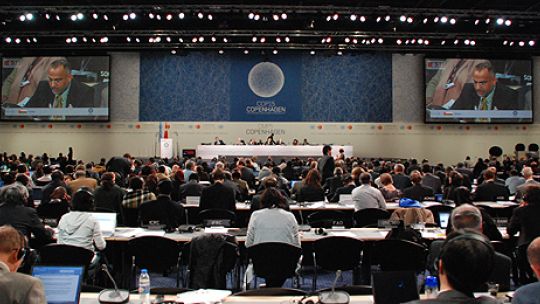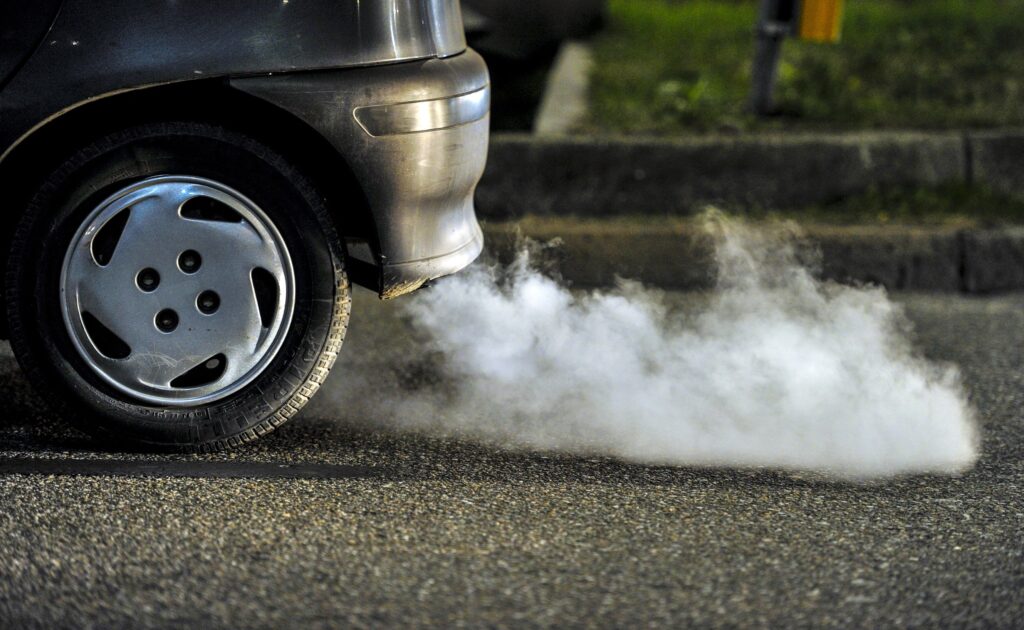
The Paso del Norte Basin (the Basin), comprising El Paso, TX, Sunland Park, NM and Ciudad Juarez, Chihuahua, suffers from some of the worst air quality across the United States and Mexico- ranked as the 14th worst urban air quality in the United States in a 2023 report by the American Lung Association. Development of the Basin began in the 19th century when it became recognized as one of the lowest passage points along the continental divide. Mining, smelting, agricultural and manufacturing industries gathered along either side of the border over the next two centuries and the surrounding urban area grew in kind to meet the need for a growing labor force. Today, the Basin remains a hub for industrial manufacturing.
With an urban area of over 2.7 million, the Basin is the second-largest transborder agglomeration along the U.S.-Mexico border and hosts the third largest inland port of entry between the U.S. and Mexico, behind Laredo, TX and San Ysidro, NM. In 2018 alone, the El Paso border crossing handled over 2,000,000 and 844,000 northbound crossings of cars and trucks, respectively. Cars and trucks are the largest contributors to air pollution within the Basin. Additional polluters such as scrap tire fires and wood-stove cooking are known to contribute to poor regional air quality, however the exact relative contributions remain unclear.
Manufacturing within El Paso county alone accounts for 8.3% of the economy of Texas, bringing in an estimated $2.7 billion dollars. Petroleum and coal, primary metal, and apparel are all considered as strong industries within the region and still growing. Ciudad Juarez itself has over 320 factories, accounting for more than 60% of factory jobs in the state of Chihuahua. Coupling these numbers with a growth rate of 5% and 1.38% for El Paso and Ciudad Juarez, respectively, air quality issues caused by industry manufacturing and traffic will be exacerbated by continued growth in the coming years.
Addressing the rising demand for clean air within the Paso del Norte Basin requires joint efforts by key stakeholders to offer proactive solutions. Closing the information gap on air quality point sources, facilitating binational collaboration towards reducing traffic-related emissions, and encouraging the involvement of private actors will all be necessary to change the trajectory of air quality within the basin.
State Solutions: collaborative approaches

Create a Clean Air Fund
The U.S. and Mexico should establish a “Clean Air Fund” to promote data collection and pollution mitigation initiatives. We recommend that the fund be administered through the North American Development Bank and used for the benefit of the El Paso-Ciudad Juarez region. By issuing grants and loans to private actors and community groups dedicated to cleaning up the region’s air, this initiative would yield numerous benefits. First, by helping defray the costs of air quality monitors, it would improve data availability and increase scientists’ understanding of the causes and consequences of the issue. Second, through funding innovative projects, it would contribute to improving air quality. Third, it would foster collaboration between private actors and communities, enhancing local capacity for environmental stewardship. This complements the top-down regulatory strategy that we also recommend. Finally, it would improve public health by reducing pollution-related illnesses, alleviating some burden on healthcare systems in both countries. Most importantly, we believe this initiative would bolster bilateral cooperation, strengthen diplomatic ties between the U.S. and Mexico. While initial costs of the fund may raise concerns among budget hawks, the long-term economic and environmental benefits far outweigh the financial cost. Through transparent governance and robust accountability measures overseen by the development bank, any potential downsides, such as misuse of funds or lack of efficacy, can be addressed. Overall, the establishment of a Clean Air Fund represents a proactive and beneficial step towards ensuring a healthier and more sustainable future for the El Paso-Ciudad Juarez region and beyond.
Reduce Vehicle Emissions
Idling times at the border crossing are too long and harm air quality. Currently, the setup requires commercial vehicles to wait in long lines to cross the border, often undergoing inspections by customs and border patrol agents. This waiting period prompts drivers to idle their vehicles and run air conditioning, releasing emissions for no added productivity. It is imperative that both states implement regulations to curb idling among commercial vehicles waiting at the border. However, for regulations to effectively address the issue, both countries must also explore innovative alternatives. For instance, this could involve finding alternative routes to redirect commercial traffic away from congested border points, thereby minimizing idling times and redirecting emissions out of the Basin. Additionally, investing in technological solutions through partnerships with private entities to expedite vehicle inspections would prove beneficial. Creative solutions such as electric shuttles that transport trucks across the border without idling offer other promising avenues for reducing air pollution. By embracing innovation and fostering cooperation, we can overhaul border management practices and pave the way for cleaner, healthier air.
Community Organization as a Driving Force
To promote the policies in this post, the communities of El Paso, Sunland Park, and Ciudad Juarez should organize to advocate for policies to improve air quality – either the policies above, or policies that they personally support. The timing couldn’t be more perfect. The U.S. Federal Government is currently considering a renovation project for the Bridge of the Americas (the one toll free bridge between El Paso and Ciudad Juarez).
The traffic from this bridge causes a massive amount of pollution in the region. Cars can idle for up to ten hours at a time waiting to cross the border, releasing huge amounts of vehicle emissions into the cities and neighborhoods around them. This can cause breathing problems for sensitive groups, especially children. Some residents say that the amount of vehicles should be limited, or that commercial vehicles shouldn’t be allowed to use the bridge at all.
“It’s time for us to really look at what’s happening and really call out these entities to do something about it”
Hilda Villegas, La Mujer Obrera
While the GSA (General Services Administration) is currently finished taking comments for this round of design drafting, you can stay up to date on the status of the progress here. You can also contact your local representative to give your thoughts on the project, or on air pollution in the basin as a whole.
- El Paso: Texas 16th Congressional District: Veronica Escobar
- Sunland Park: New Mexico’s 2nd Congressional District: Gabe Vasquez
Low-Cost Air Sensors as a community and industry-based solution

Continuous Air Monitoring Stations (CAMS) currently used by the U.S. EPA are the best in the business in terms of reliability of data, however the price is prohibitive for most communities, with stations costing as much as $250,000 a piece. While CAMS offer long-term reliability of data, their cost and size of the set-up limits the number of stations that can be installed across a city. One of the major issues limiting improvements to air quality in the Paso del Norte air basin is the lack of consistent and reliable air quality data. CAMS are limited in their ability to identify point-source location of air pollution, and to identify those communities suffering the worst.
Low-Cost Air Sensors offer an accessible alternative for communities to empower themselves through widespread self-monitoring. Previous research in the air basin installed a system of Purple Air sensors to create a reliable network of smaller scale monitors across both El Paso and Ciudad Juarez. The initial rounds of research were informative, however one of the major limitations of the Purple Air sensors is their reliance on active connections to a power source and to an ethernet internet service. To improve air quality monitoring across the basin and to improve our ability to identify point-sources, a more reliable and self-sufficient model is necessary. At $1000 per unit, the Clarity air sensors such as the one pictured above, provide 24/7 air quality monitoring using self-sufficient systems that run using solar power and satellite internet connection. Lastly, data is uploaded real-time to an online dashboard that can be made publicly available- allowing members of the community to identify in real-time the quality of the air they are breathing. Set up of the Clarity sensors just requires a surface with ample sunlight to be mounted and occasional cleanings of their solar panels.
The Joint Advisory Committee
As the primary intergovernmental organization working on Basin air quality, we highly recommend the Joint Advisory Committee increase investment in the installation of Clarity sensors across the Paso del Norte Air Basin to provide active and real-time air quality monitoring data. Communities across the Basin have the ability to contribute to the collection of data on air quality to lead to problem-specific approaches to solving air quality issues. Similarly, communities have a right to consistent and reliable information regarding the quality of air they breathe in their own community. Low-cost air sensors such as the Clarity sensors empower communities to become powerful stakeholders in the improvement of their own air quality.
We suggest the following two methods:
- The creation of the “Blue Seal”: An award to recognize industry partners sponsoring a low-cost sensor
- Utilizing the Binational Air Quality Fund to sponsor low-cost sensor installation in low-income communities.



